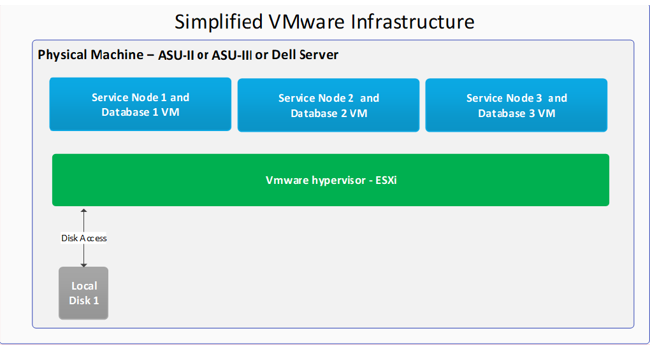General MX-ONE Requirements
MX-ONE system requires a good system planning, refer for MX-ONE System Planning document for further information.
The MX-ONE system requirements for servers are changed from MX-ONE 7.0 release onwards and it depends of the system size as well as the application running on the server. It is important that the MX-ONE Capacity and the Virtualization description documents are read carefully before deploying a new MX-ONE.
For information about IOPS and Bandwidth requirements, see the document IOPS Disk and Network Bandwidth Requirements, 33/1551-ASP11301.
The Operating System software used by MX-ONE, SLES 12 SP5 is patched with the latest security software available to date. Additionally, the firmware used by the servers (physical or virtual machines) shall be updated according to the hardware or virtualization supplier. These security updates were performance tested in Mitel´s labs and the test results concluded that there is performance degradation, which results in less calls per second depending on the hardware used. The number of calls described in capacity document takes the new values in consideration.
Please note that some servers are not supported from MX-ONE 7.0 release onwards, due to performance limitations, refer to the capacity document to get the list of not supported servers.
It is highly recommended to use Industrial Standard Servers using Intel processors, family Skylake or higher.
It is highly recommended to use Industrial Standard Servers for larger and very large systems for Service Nodes and database nodes (both co-located and stand-alone).
It is highly recommended to use SSD disk to MX-ONE database instances (Cassandra).
When MX-ONE is deployed in a hypervisor environment, e.g. VMware ESXi free version, and the MX-ONE data is stored in local disks, instead of Storage Area Networks (SAN), it is highly recommended to use SSD disks, at least in the VMware host that have a Cassandra database on it, this is to avoid any disk latency issues in a Multi-VM environment. Please see the scenario below:

Disk performance (latency). In general, MX-ONE system as with any real-time application, requires low I/O read and write disk average latency. Although 2 ms or less would be considered optimum and highly recommended, an average delay of less than 10 ms, which can be expressed in either "await" in Linux terms or GAVG in VMware terminology should not induce any adverse effects in the system under normal voice traffic load conditions. This is valid for systems running local disk and SAN.
RAID Controller with at least 1GB cache it is highly recommended.
Database stand-alone servers are recommended to be used to Large (above 3,000 SIP extensions) and Very Large (above 10,000 SIP extensions) systems.